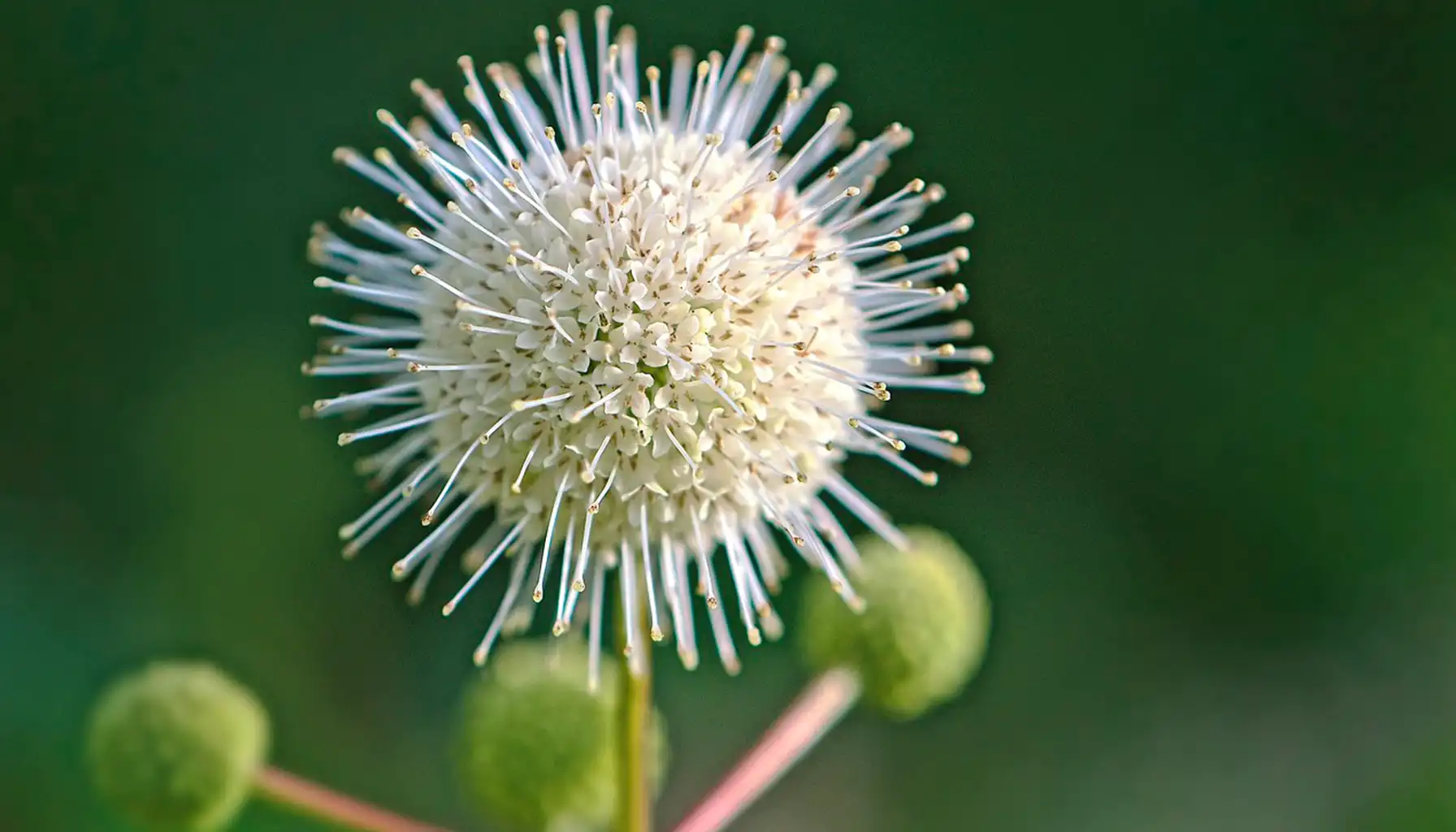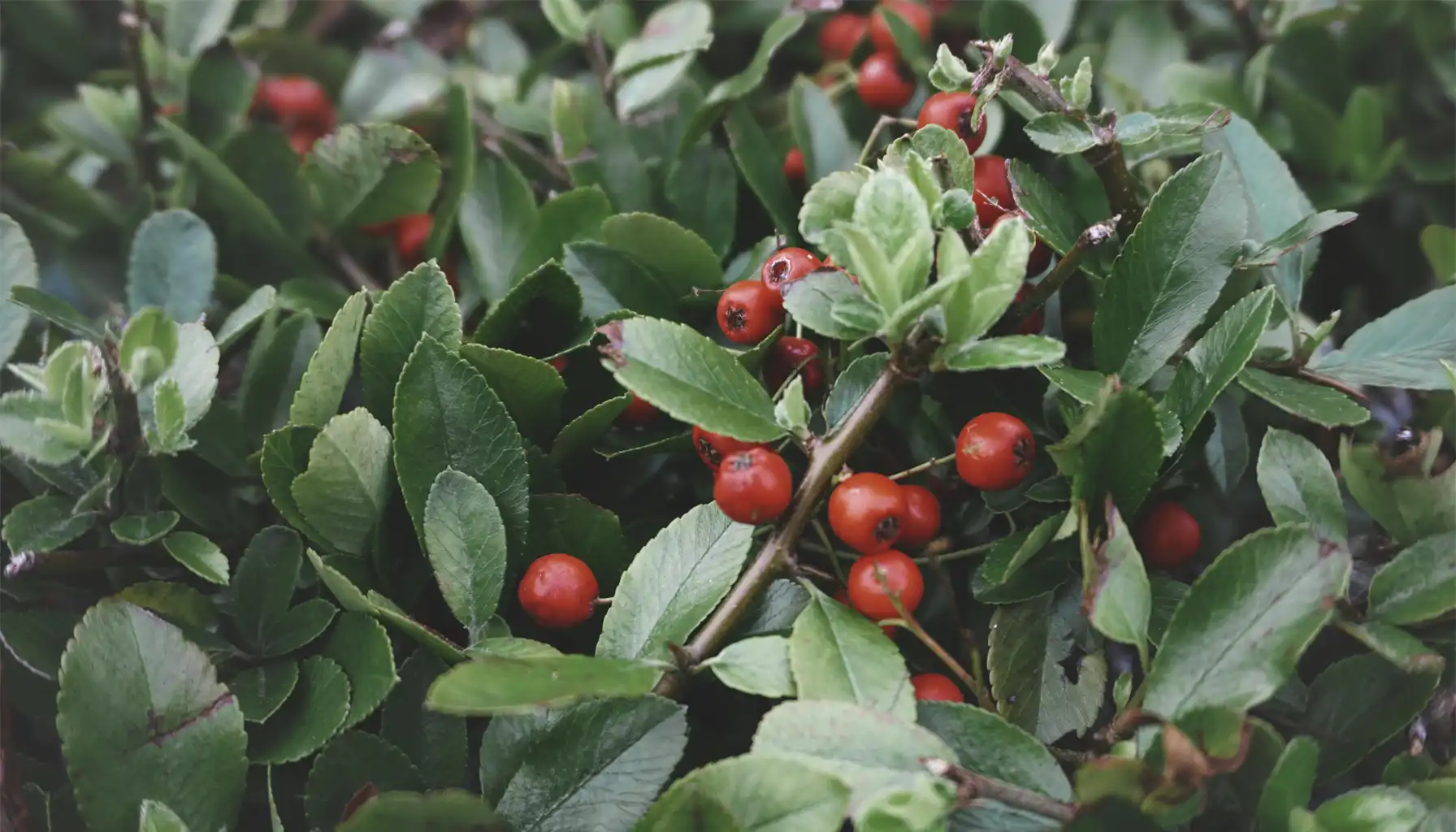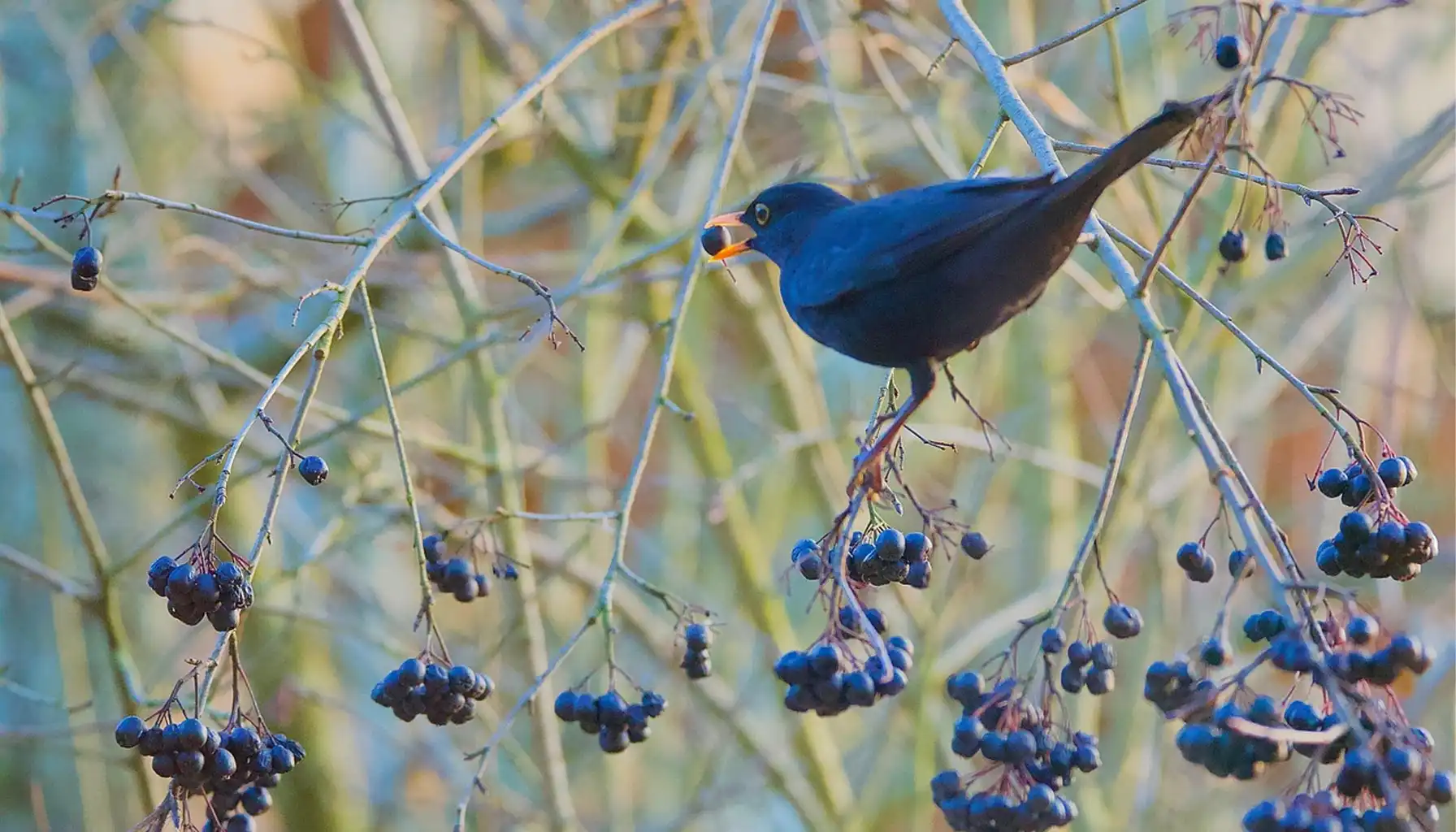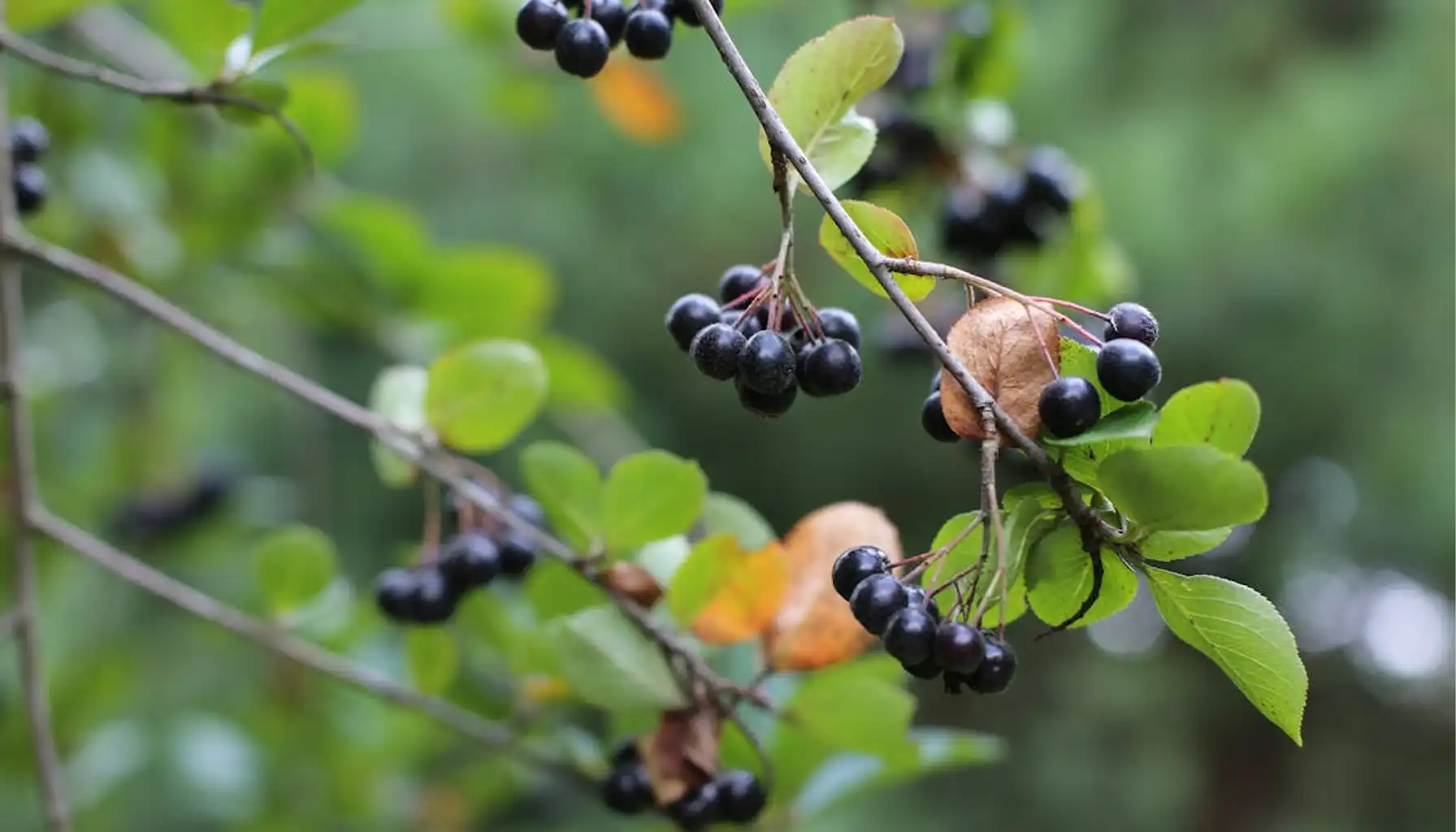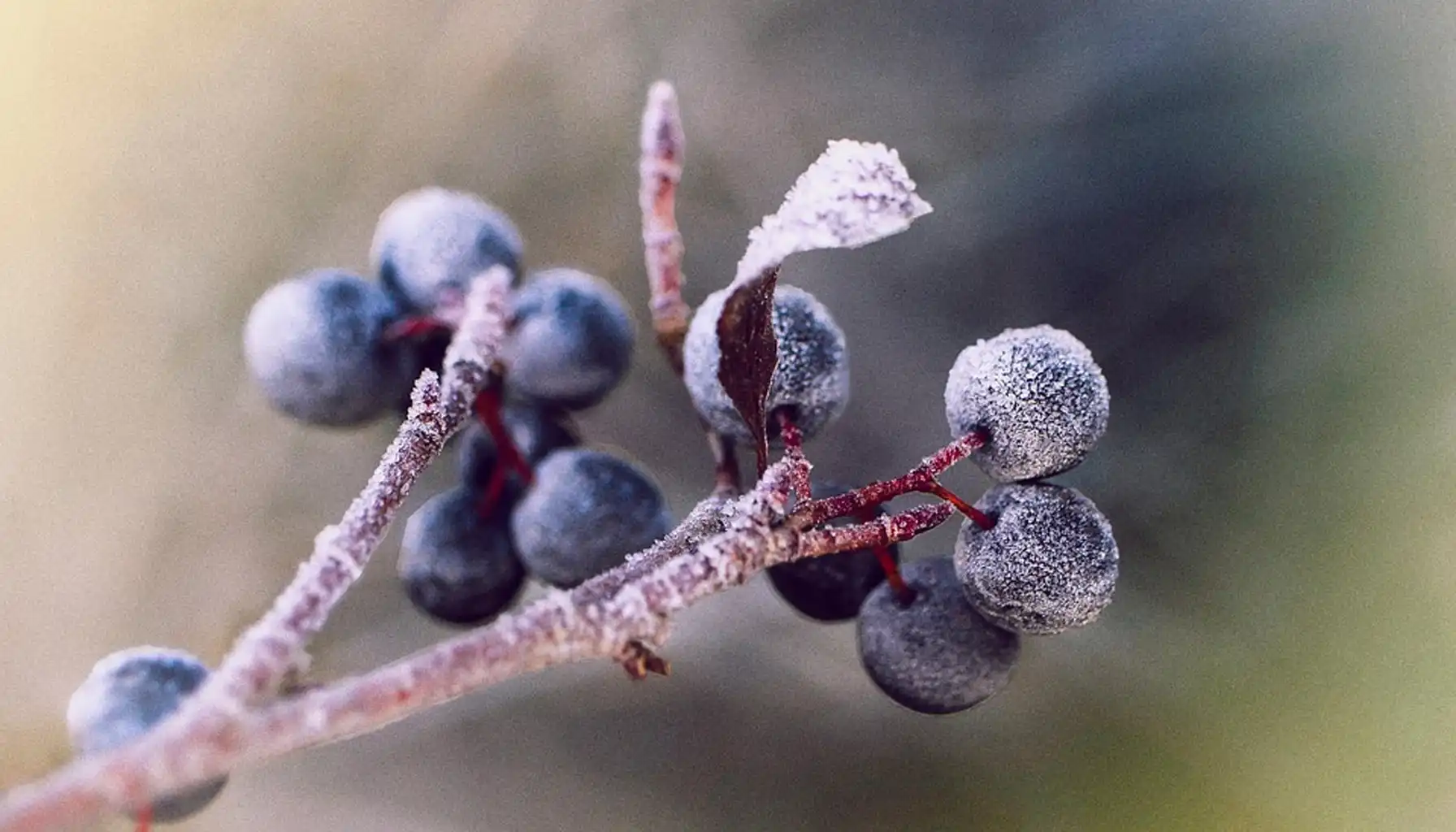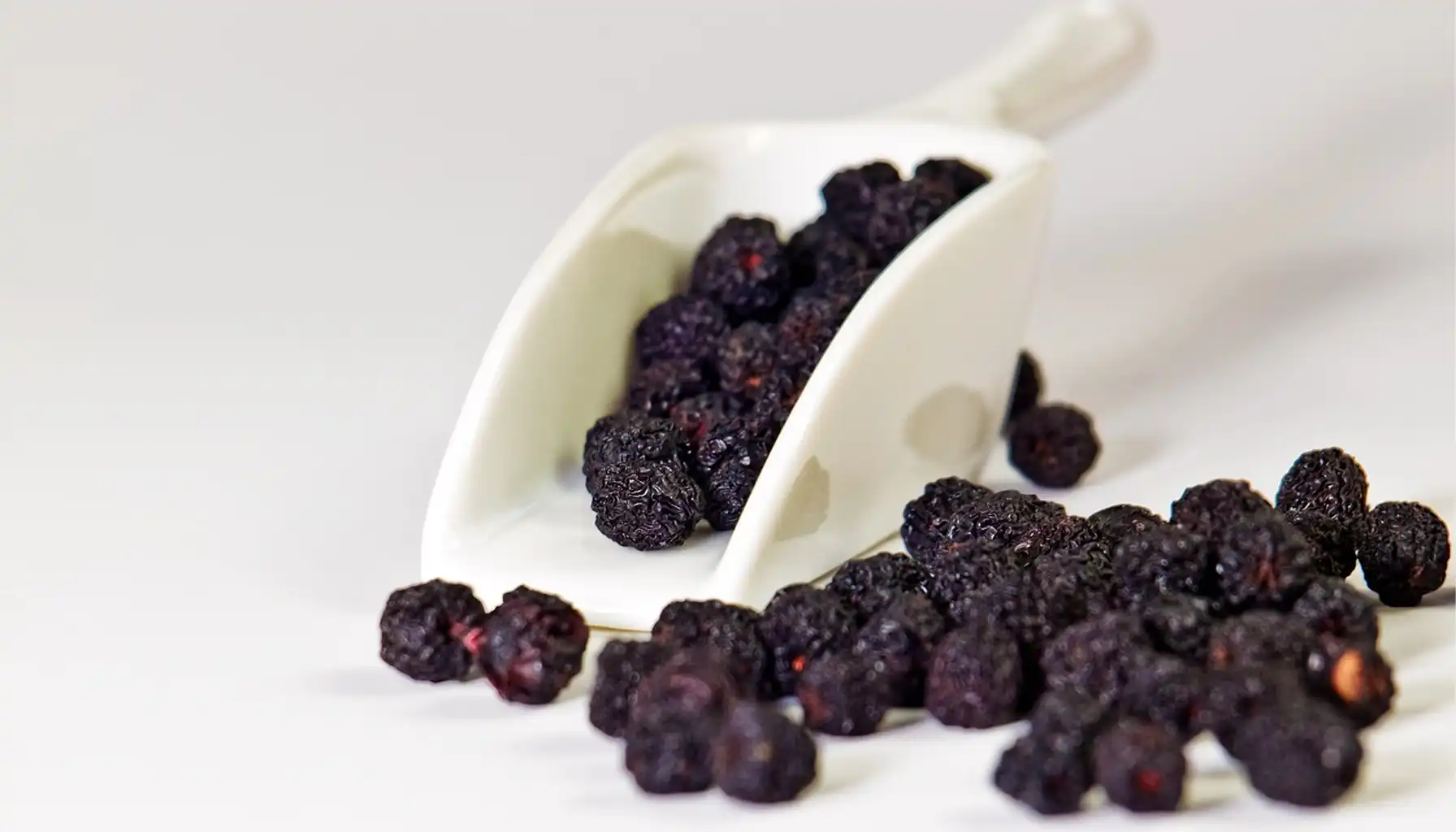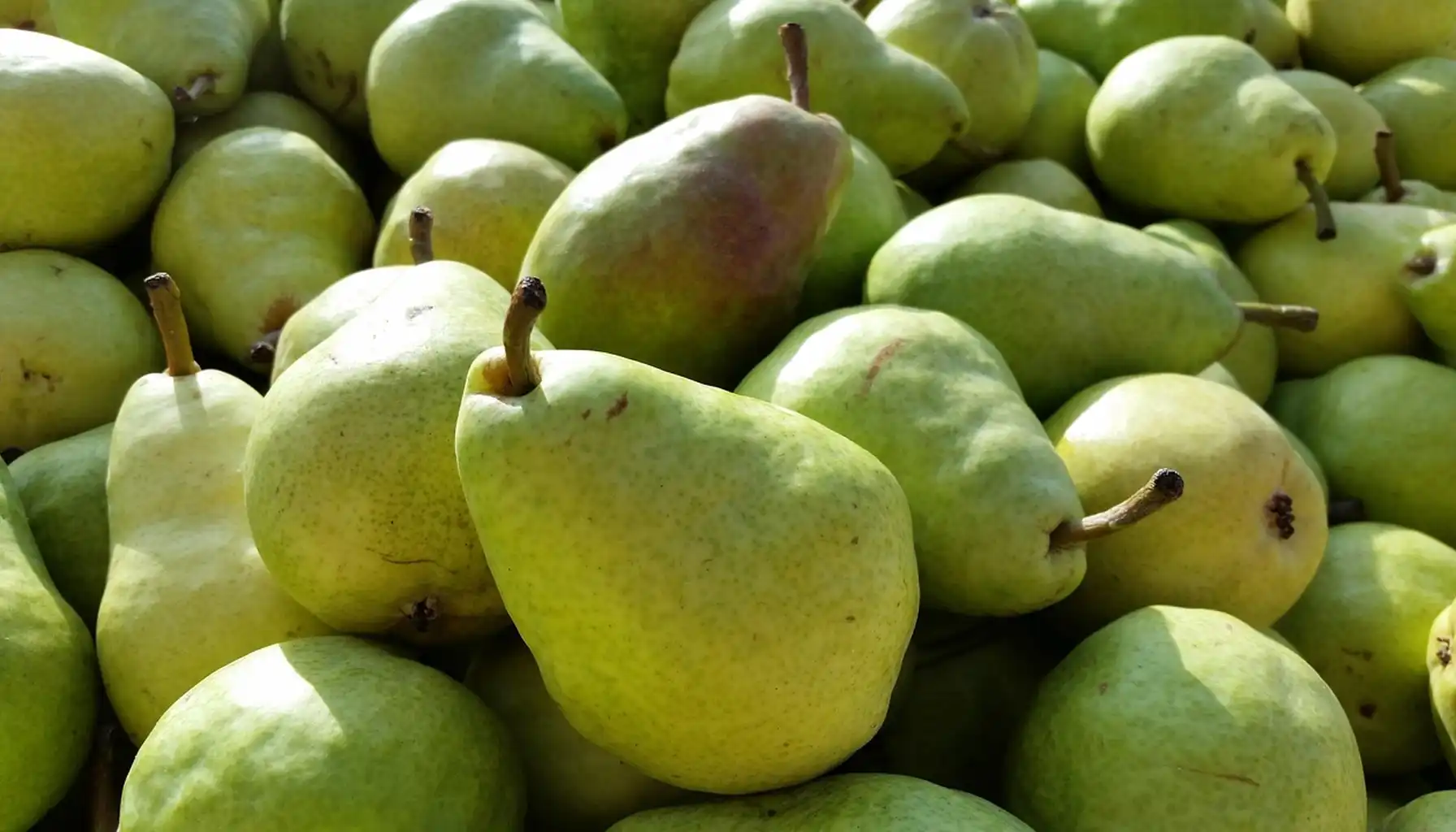With its bittersweet taste and deep-green foliage, Aronia (or chokeberry) is traditionally admired by gardeners. And after the latest research, we know much more about this berry’s positive influence on our bodies and rightfully call it a superfood!
So, admiring both traditions and the latest healthy trends, let’s learn more about growing Aronia bush, using it in culinary, and applying new technologies in your plant search and care routines.
What Is Aronia? Botanical Overview
Scientific classification: Aronia, family Rosaceae
Common species:
Aronia melanocarpa (Black chokeberry)
Aronia arbutifolia (Red chokeberry)
Aronia × prunifolia (Purple chokeberry, a natural hybrid)
Native range: Widely distributed across Eastern and Central North America, particularly thriving in wetlands, thickets, and forest edges.
Morphologically, the Aronia plant is a deciduous, multi-stemmed shrub, typically growing 3–8 feet tall. Their foliage is shiny and deep green through summer, transforming into fiery shades of red, orange, and purple in autumn. In spring, clusters of white to pale pink blossoms attract bees and butterflies, followed by the development of round, glossy berries. Depending on the species, the Aronia fruit may ripen to black, red, or purple hues by late summer or fall.
Aronia Benefits and Nutritional Profile
The Aronia berry plant is often referred to as “superfruit,” and with good reason. Scientific studies have consistently highlighted their exceptionally high antioxidant levels, surpassing even blueberries and cranberries in anthocyanin and polyphenol content. This leads to multiple Aronia berries benefits caused by antioxidant and vitamin contaminants.
Antioxidant Power: Protects cells from oxidative stress, reducing risks linked to aging, cardiovascular disease, and inflammation.
Nutritional Highlights: Rich in vitamin C, vitamin K, fiber, manganese, and iron—while remaining naturally low in fat and calories.
Potential Health Benefits: Research suggests possible anticancer, antidiabetic, and neuroprotective effects. Early findings also point to improved liver health and immune system support.
Traditionally, Native American communities used chokeberries for food and medicine. Today, Aronia berry recipes are widespread and include many forms, such as aronia juices, jams, teas, wines, baked goods, and dietary supplements. Although fresh fruits are safe to eat, their astringent taste makes them more popular in processed forms.
Extra Tip: While choeberry is one of many plants known from ancient times, so is Amaranth, which is completely manageable to grow today. If you are interested in such historical experiments, check out our Amaranth growing guide.
Ornamental Varieties and Landscape Value
Aronia tree is a true double-purpose plant for your garden. While Aronia berry benefits are supporting your health, the various ornamental forms will support the beauty of your landscape. Its seasonal displays and adaptability make it a reliable shrub for almost any type of garden.
Key Species
Black chokeberry (Aronia melanocarpa)
Compact and bushy, this species produces abundant black berries in late summer. Its fall foliage shifts into deep red and purple, creating a dramatic autumn display.
Red chokeberry (Aronia arbutifolia Brilliantissima)
Taller and more upright, often vase-shaped. Known for persistent bright red berries that remain attractive through winter, especially against bare branches or snow. Its autumn foliage glows with brilliant scarlet tones.
Purple chokeberry (Aronia × prunifolia)
A hybrid combining traits of both black and red chokeberries. Its berries ripen to a dark purple, and foliage exhibits a spectrum of warm fall shades.
Popular Cultivars
Garden centers and nurseries often feature improved cultivars selected for ornamental appeal and productivity:
‘Autumn Magic’ – Celebrated for its intense fall color and heavy berry production.
‘Viking Aronia Chokeberry Bush’ – A larger-fruited variety, favored in commercial berry production.
‘Nero’ – Compact, highly ornamental, and ideal for smaller gardens.
‘Brilliant’ – True to its name, known for especially vibrant scarlet foliage.
‘Aronia Low Scape Mound’ — Called so for its small height of 1-2 feet, perfect for mass planting and groundcover.
‘Aronia Ground Hug’ — ultra-low variety, less than 1 feet tall, with dense, glossy foliage and pure white flowers.
Aronia Berry Bush Species & Cultivars
Variety | Berry Color | Height Range | Notable Traits |
A. melanocarpa | Black | 3–6 ft | Compact, excellent fall color |
A. arbutifolia | Red | 6–10 ft | Vase-shaped, persistent berries |
A. × prunifolia | Purple | 6–8 ft | Hybrid vigor, mixed traits |
‘Autumn Magic’ | Black | 4–6 ft | Intense color, prolific berries |
‘Viking’ | Black | 5–7 ft | Larger fruit, good yields |
‘Nero’ | Black | 3–5 ft | Compact, ornamental |
‘Brilliant’ | Red | 6–8 ft | Exceptional foliage display |
Low Scape Mound & Ground Hug | Black | 0,5–2 ft | Ultra-low, good for mass planting |
Landscape Uses
Chokeberry fits seamlessly into a wide range of designs depending on its variety and ornamental specification:
Shrub borders and hedges: Dense foliage of Aronia Brilliantissima and seasonal interest provide structure.
Rain gardens and wet areas: Naturally suited to damp soils, Low Scape Mound Aronia thrives in rainwater-collecting landscapes.
Mass plantings: Creates stunning visual impact when multiple Ground Hug Aronia shrubs are grouped together.
Wildlife gardens: Supports pollinators in spring and feeds birds and small mammals through autumn and winter.
Planting and Growing Guide
Site selection: Prefers full sun for maximum fruiting, though part shade is tolerated.
Soil needs: Moist, well-drained soil with slightly acidic to neutral pH ensures best results.
Watering: While moisture-loving, once established chokeberry tolerates short droughts. Mulching helps retain soil moisture.
Fertilization: Minimal—most plants thrive without heavy feeding, especially if planted in rich garden soil.
Maintenance: Prune lightly after flowering to shape the shrub and encourage air circulation. Thinning older stems every few years promotes vigor.
Pro Tip: With AI Plant Finder, gardeners can track seasonal care—such as pruning times, watering reminders, and even photo-based pest diagnosis—making Aronia Low Scape Snowfire cultivation both easy and sustainable.
Harvest, Culinary Uses, and Storage
Aronia berries ripen in late summer to early autumn, depending on the species and cultivar. They should be harvested when fully colored—black, red, or purple—and slightly soft to the touch. A mature shrub can yield several pounds of berries each year, making it an excellent option for home gardeners interested in both beauty and productivity.
While fresh berries has been eaten raw since the times of ancient grains, most people today prefer them processed due to their astringency. Popular culinary uses include:
Preserves and jams – The tartness blends well with sugar, producing richly flavored spreads.
Juices and wines – Valued for their deep color and various Aronia berry juice benefits like high antioxidant content and immune system support.
Baked goods – Muffins, pies, and breads benefit from chokeberries’ tart flavor.
Dried snacks – Dehydrated berries in a form of Aronia powder make a healthy, antioxidant-packed addition to cereals or trail mixes.
Storage tips: Berries can be frozen immediately after harvest, dried for long-term storage, or turned into juice and concentrate. Freezing preserves nutrients and flavor, ensuring a year-round supply.
Ecological and Wildlife Benefits
Aronia shrubs are prized not only for human use but also for their ecological contributions:
Pollinator support: Spring flowers attract bees, butterflies, and other beneficial insects.
Wildlife habitat: Birds and small mammals consume the berries well into winter, when food is scarce.
Sustainability: Chokeberry is hardy, low-maintenance, and resistant to pests and diseases, making it ideal for eco-friendly and permaculture gardens.
Buying Guide and Nursery Tips
When purchasing chokeberry, choose healthy nursery-grown plants with glossy green foliage and a strong root system. Avoid specimens with leaf spots or signs of stress.
Best planting times: Early spring or autumn, when temperatures are moderate and soil moisture supports root establishment. For those aiming for fruit production, plant in full sun and consider grouping multiple shrubs for increased pollination and yield.
Frequently Asked Questions
Are aronia berries safe to eat raw?
Yes, despite its name it doesn’t have dangerous Aronia berry side effects. Anyway, many prefer them processed due to tartness.
Is chokeberry good for the liver?
Studies suggest potential liver-protective properties, thanks to high antioxidant levels.
Where does chokeberry grow?
Native to Eastern and Central North America, thriving in wetlands and thickets.
Is chokeberry easy to grow?
Very; it adapts to many soils, requires minimal fertilization, and resists pests.
How long does it take aronia to produce fruit?
Typically 2–3 years after planting.
Can you grow aronia from cuttings?
Yes, softwood or hardwood cuttings root reliably with proper care.
Related AI Plant Finder Posts
